Touch Me, Don’t Forget Me is the artist-duo Masumi Rodriguez and Elena Kirby. The collaboration is a long spanning project to build shared language and familiarity which we use as a source to form recurring and shifting senses of making work out of our relationship to our materials and a curiosity for what’s already here.
With the topic of “invasive species” that spans across many fields of study, we learn and collaborate with land stewardship groups, ecologists, land-workers, human geographers, and artists to be in conversation about the nuances that are prevalent in the relations we hold with these characterized plants. Within our work, we look into individual, collective and institutional motivations, priorities, and approaches of removing these plants to understand our human relationship to “invasive species” and to consider the labor that goes into stewardship and care of land.
As we navigate the process of creating material gleaning from urban spaces, it allows us to contemplate the language of “invasivity” in connection with humans and plant species. Since papermaking is a long and laborious process, we’ve built a curiosity for artistic practice that looks at function and desire, forming intricate relationships through material making.
Relationships with plants, people, and each other beings have been an integral part of our built practice. We were able to build our practice and technical skills with the generosity of all the relationships we continue to encounter. Our recent work, Drying Mechanism, is manifested in gathering to collectively process plant fibre, in the form of a specific “tool.” We hold a desire to place ourselves within long-spanning memories of what goes into the objects that we hold, and that hold us. As a starting place, paper is formed through breaking down initial bonds in plant fibres which are reformed into new bonds in paper. Within this transition are the many stems and the many hands both repeating motions, until in the final material, one motion is not decipherable from the next, we feel the manifold surfaces of the present object, what went in, and what emerged.


Portfolio

Karamushi
05.01-12.30 2023

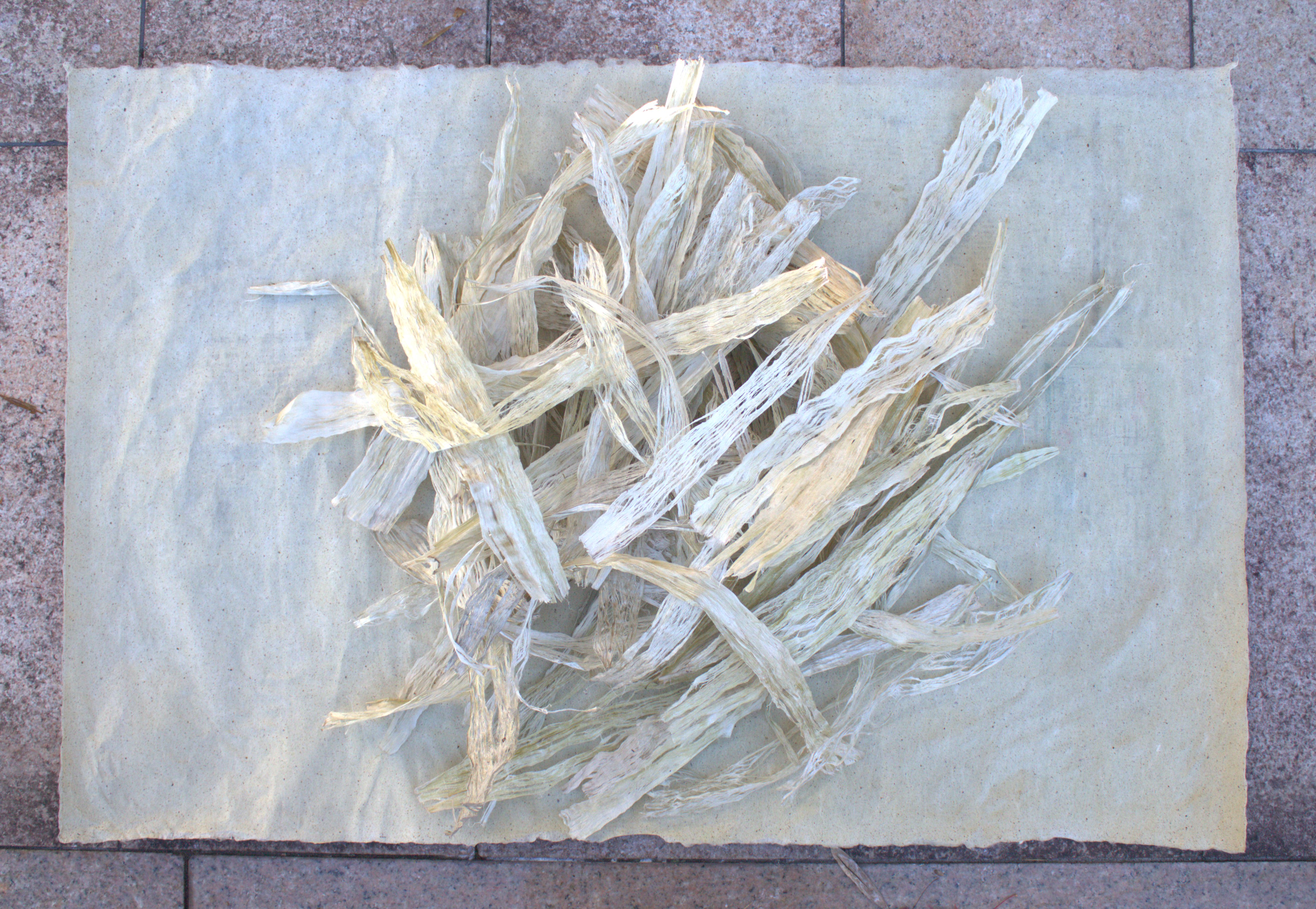


Washi+, Kochi, Japan
Our mentors include Ayumi Hamada, Hiromasa Hamada, Ryusuke Kitaoka, and Myu Uchida.
Our paper was made from karamushi plants we cut while working on local farms during weeding season.
Processes of paper-making from harvesting, hand processing raw material, and making paper meanwhile drafting a practice of processing fibers from alternative plant species.
This practice stems from how we can source materials as emerging artists. From there we build a practice around extending our material into objects that engage with embued memories of their making. We aim to continue to find ways that the knowledge of what goes into this material will connect us with others.

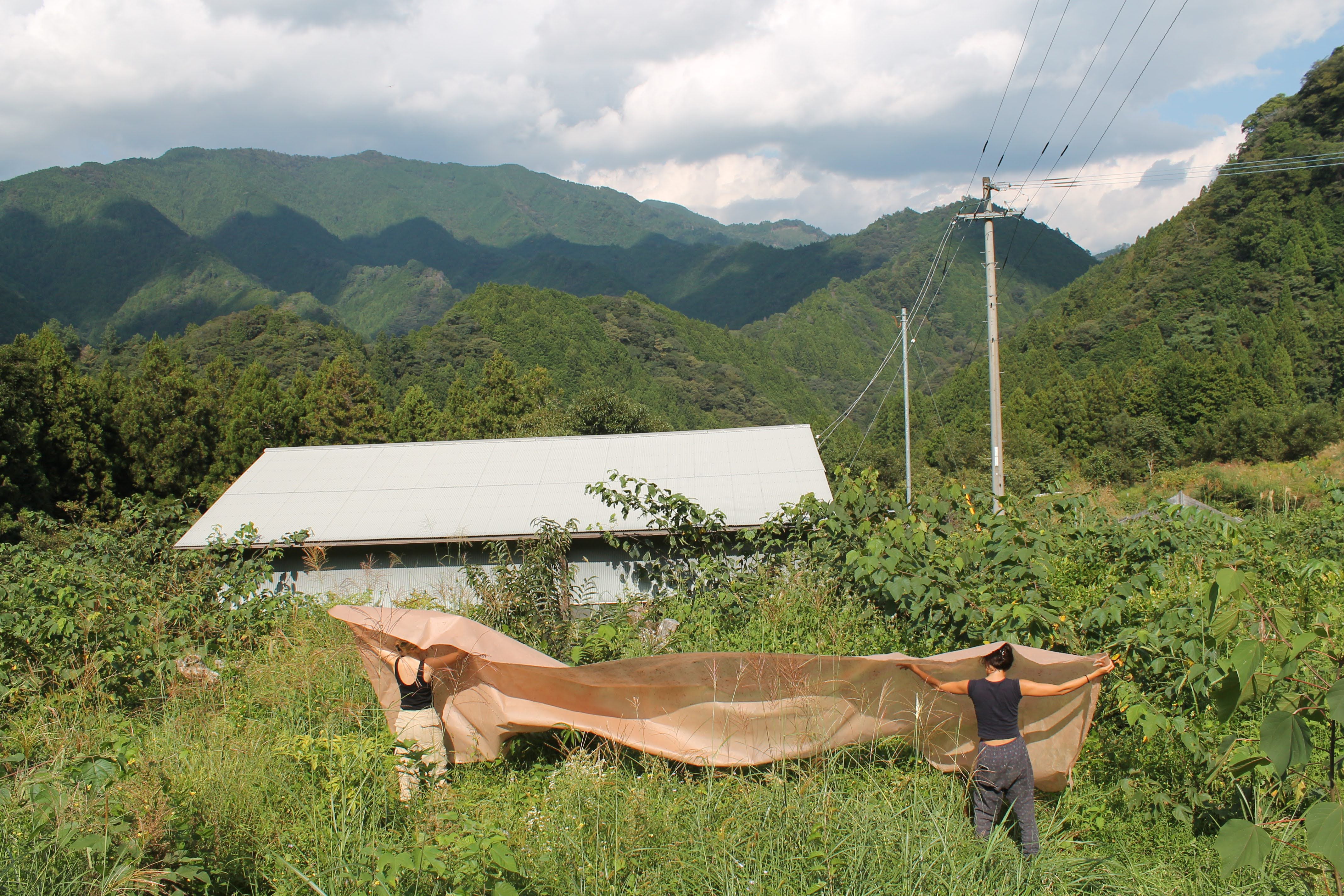

After-hours
12.01 2023
Ino Town Paper Museum, Kochi, Japan
This exhibition was a collaborative work made by Masumi Rodriguez, Elena Kirby and Lucy Carver Brennan. This work was created using debris and off-cuts of karamushi (chyoma) and kozo. The accumulation of materials and structures reflects the time spent on the kozo farm in Ochi, Yanagino and Yasui. After farming hours we explored processing plant-material into paper forms, getting a further understanding of the material through different modes of application.
This work comes from our desire to create collaboratively.
Playing with pulp, light, flexibility and stability through many hands has allowed us to disassemble our own artistic instincts by letting go of our personal ego that can often be attached to art making. We are exploring what can come from co-creation.
This work was a collaboration with Lucy Carver Brennan.



Paper tiles
01.20 2024
tiSamjort, Phnom Penh, Cambodia
Our material studies in Japan led to the basis of our practice and we began to host workshops which function both to share our processes with the public, to talk to people and as material research into sourcing urban site-specific plant material. We hosted a workshop / open house for friends of friends to come and create paper with us in the studio.
This project was a reflection on how workshop participants can be involved in the making of a work. Play off of floor tiles and drying strategies created in new places.
The Paper Labs
05.15-08.01 2024
05.15-08.01 2024
Coast Salish/Vancouver, Tkaronto, and Tiohtià:ke/Mooniyang/Montréal
In 2024 we created a series of ten free workshops with site-specific “invasive plants species” in 2024 called PAPER LABS. This took place on the territories of the Coast Salish/Vancouver, Tkaronto, and Tiohtià:ke/Mooniyang/Montréal.
Depending on location, the species and removal practices can differ. We learned about the interspecies relationships that each plant holds. For this reason, traveling from city to city created a material study on “invasive species” and interspecies relationships.
In each place, we connect with local land stewardship groups to make use of the plants that they are removing which are otherwise sent to landfill. These groups are set up to remove “invasive plant species” to support the biodiversity of native plants. By spending time with these groups, we learn about the infrastructure that is built around these removals, investigating the land management practices (colonial and indigenous) that shapes our urban greenspaces.
Along with this, comes a conversation about what it means to be stewarding land, who has the access and time to participate, and who is making the decisions on what is being removed. The plant that we now focus on is called dog-strangling vine, a plant native to Eurasia and invasive to the Great Lakes Regions in Canada.


Slow Street
05.26-05.30 2024
Studio 13
Territories of the Coast Salish/Vancouver
This exhibition showcased the paper archives that were made in Kochi, Japan and Vancouver, Canada. Using modular steel structures, we explored the malleability of the material. The ceramic caterpillars were a representation of one of the beings we interacted with in the kozo farm in Japan. The exhibit included work made by the participants of The PAPER LABS (Vancouver) workshops: paper and sculptures from English Ivy held at The Arts Factory duringthe month of May 2024.
The paper in the show was made from English Ivy, Karamushi, Kozo, and lawn grass. We built the structures and fixtures from steel, and the caterpillars are made from clay.


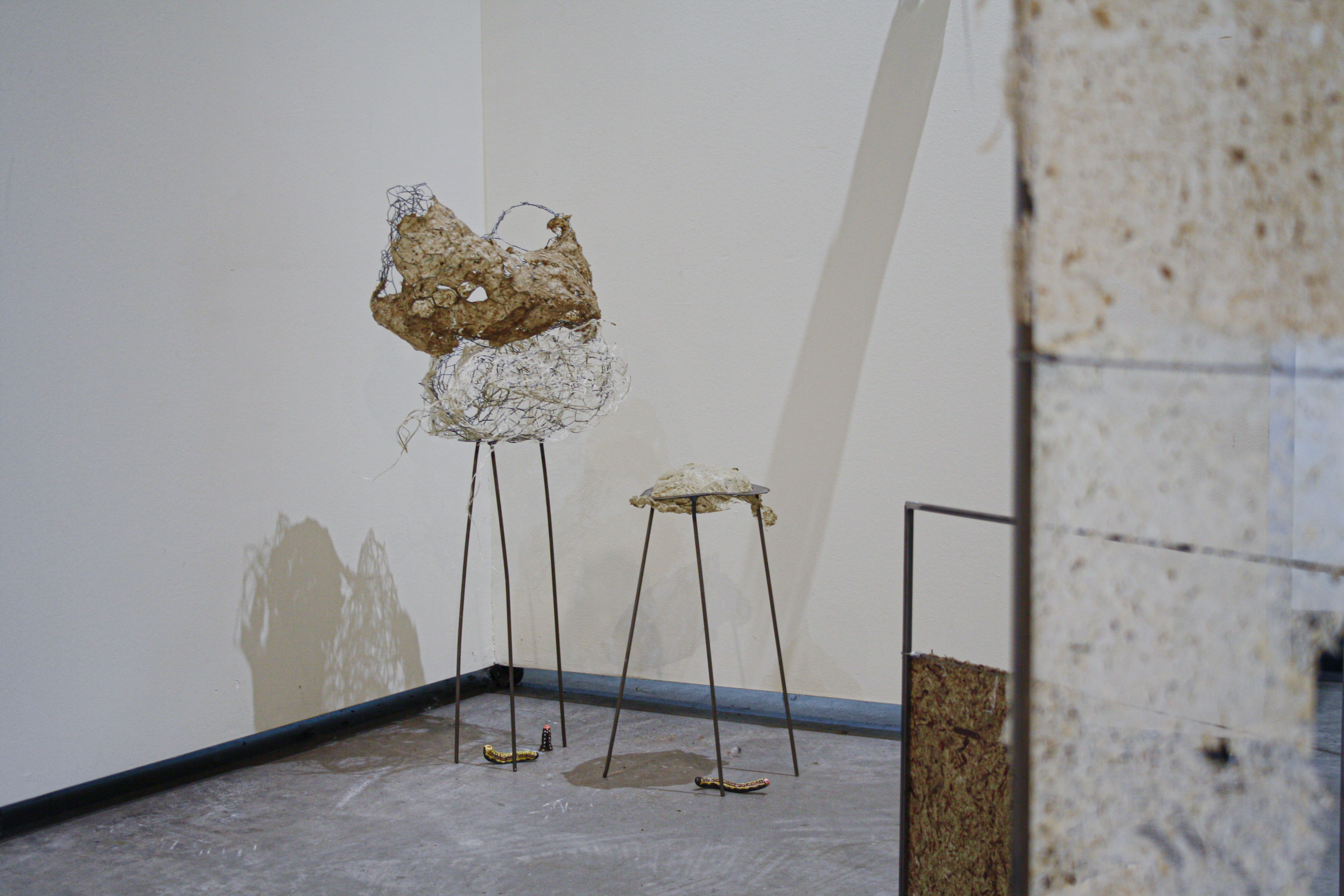
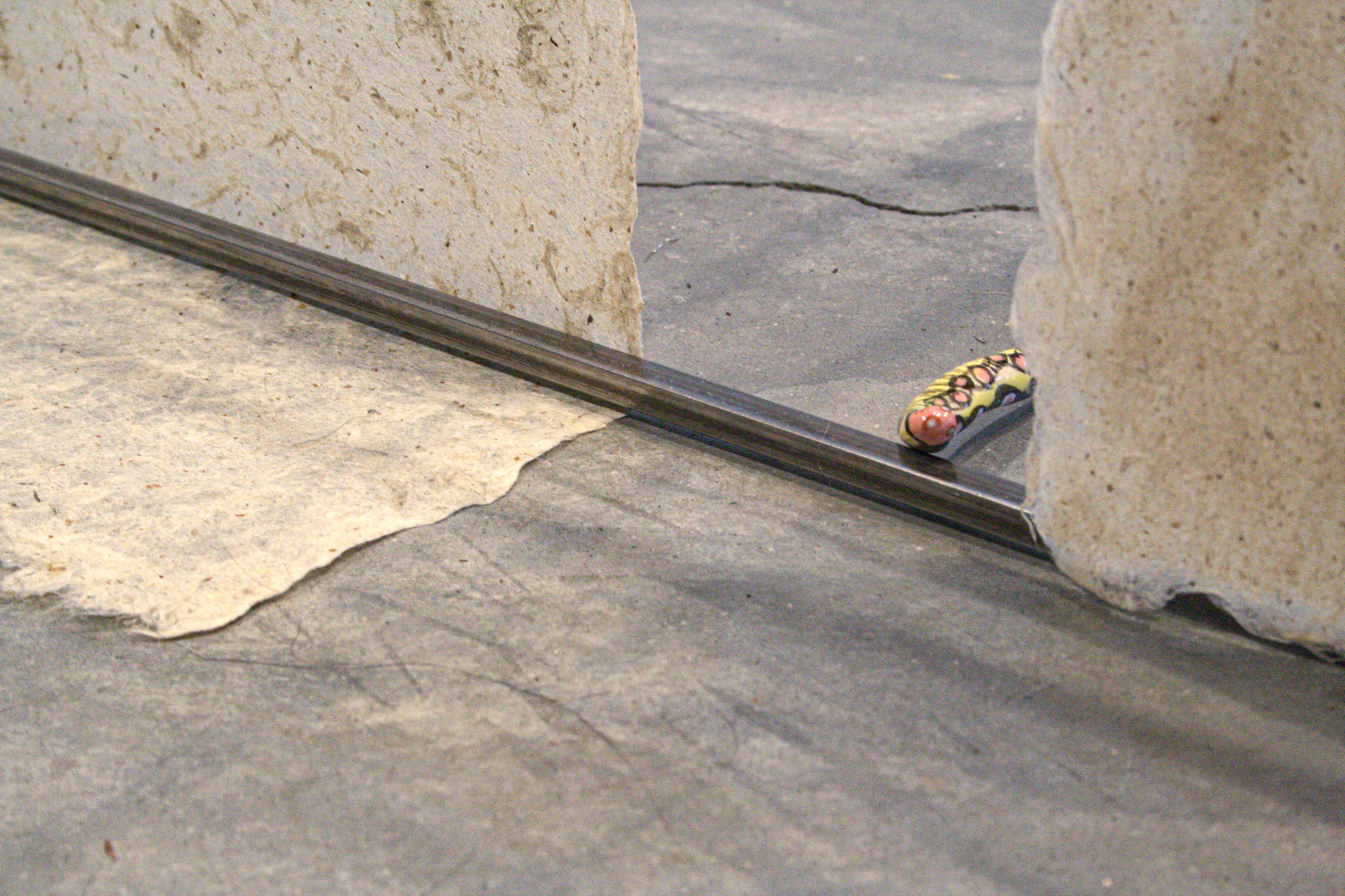
Interspecies Relations
12.10.2024-01.20.2025
Guapamacataro artist residency in Maravatio, Mexico
Material experimentation with invasive Water Hyacinth, DSV paper playscape prototyping,
DSV paper playscape prototyping,
Bumps, how do I want to play.
The primary “invasive species” we use for fibre is Dog Strangling Vine (DSV), a plant native to Eurasia, which became the main plant that we collected with stewards in Tkaronto and Tiohtià:ke-Mooniyang-Montréal. We started to develop a relationship with DSV, hosting seven workshops and making paper from the outer-layers of the stems. We became fascinated with interspecies relationships that deepened our connection to DSV and led us to focus on monarchs. DSV is related to the native milkweed and grows in colonies which crowd out native plants and disrupt the life cycle of monarchs. Monarch caterpillars rely on milkweed to successfully reproduce because milkweed serves as a nursery for their young. When the monarchs mistakenly lay their eggs on DSV, the baby caterpillars are not able to reach maturity as butterflies and migrate to the pine-oak forests across the state of Michoacán, Mexico.
Our final 10 days at the residency we focused on processing new adobe bricks from a fallen brick wall onsite; this playscape was made of a total of 65 adobe bricks with an outer layer of concrete.
Material Experimentation with Water Hyacinth
Lirio Aquatica from the water reservoir at Guapamacataro.
Lirio Aquatica from the water reservoir at Guapamacataro.
In collaboration with Toronto Nature stewards, stewardship ecologist Anna Meng.



DSV Paper playscape prototyping
Dog-strangling vine paper from the great lakes region



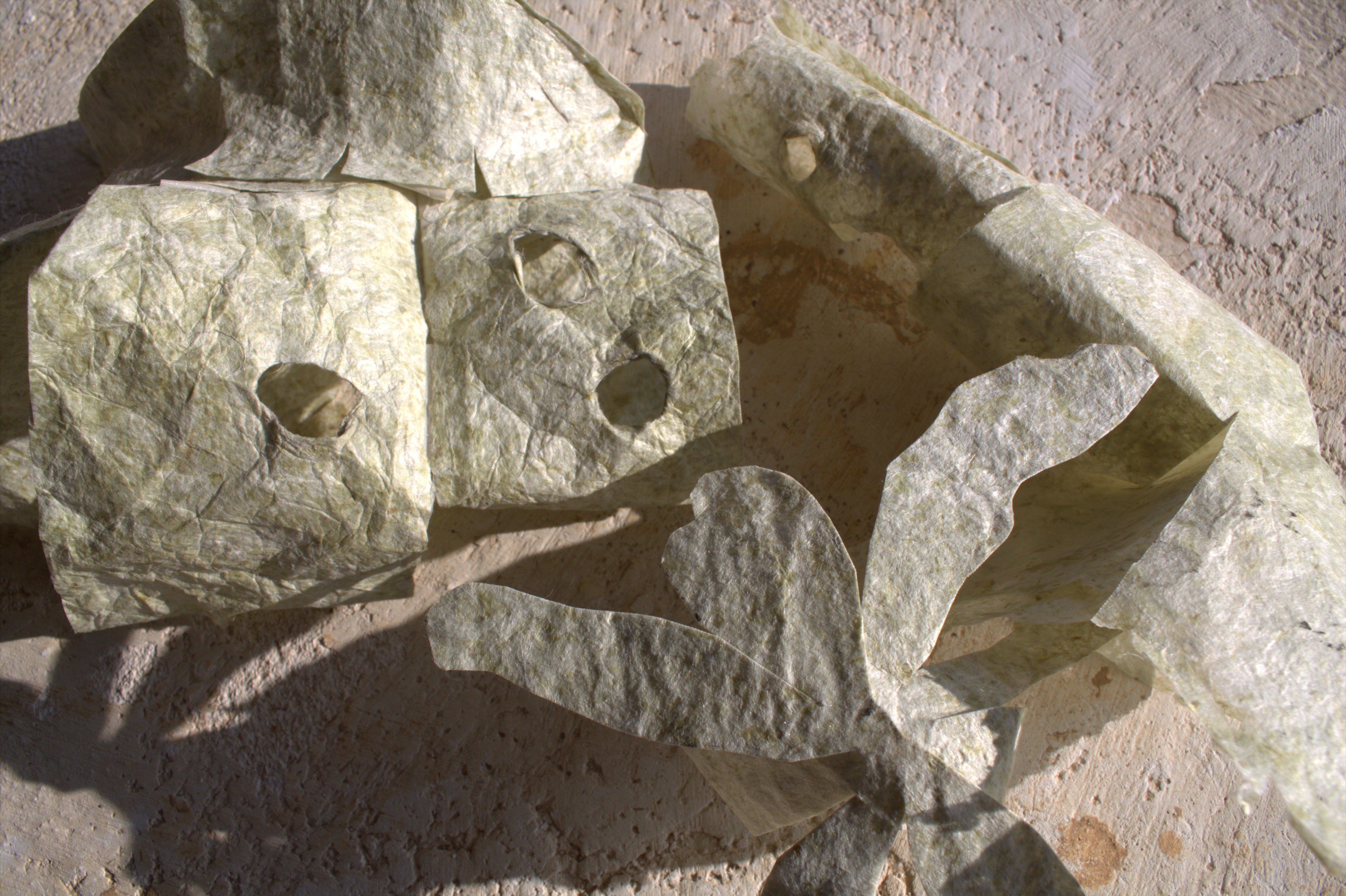
Bumps, how do I want to play
Adobe playscape, handmade bricks of straw and adobe, rebbles, cement
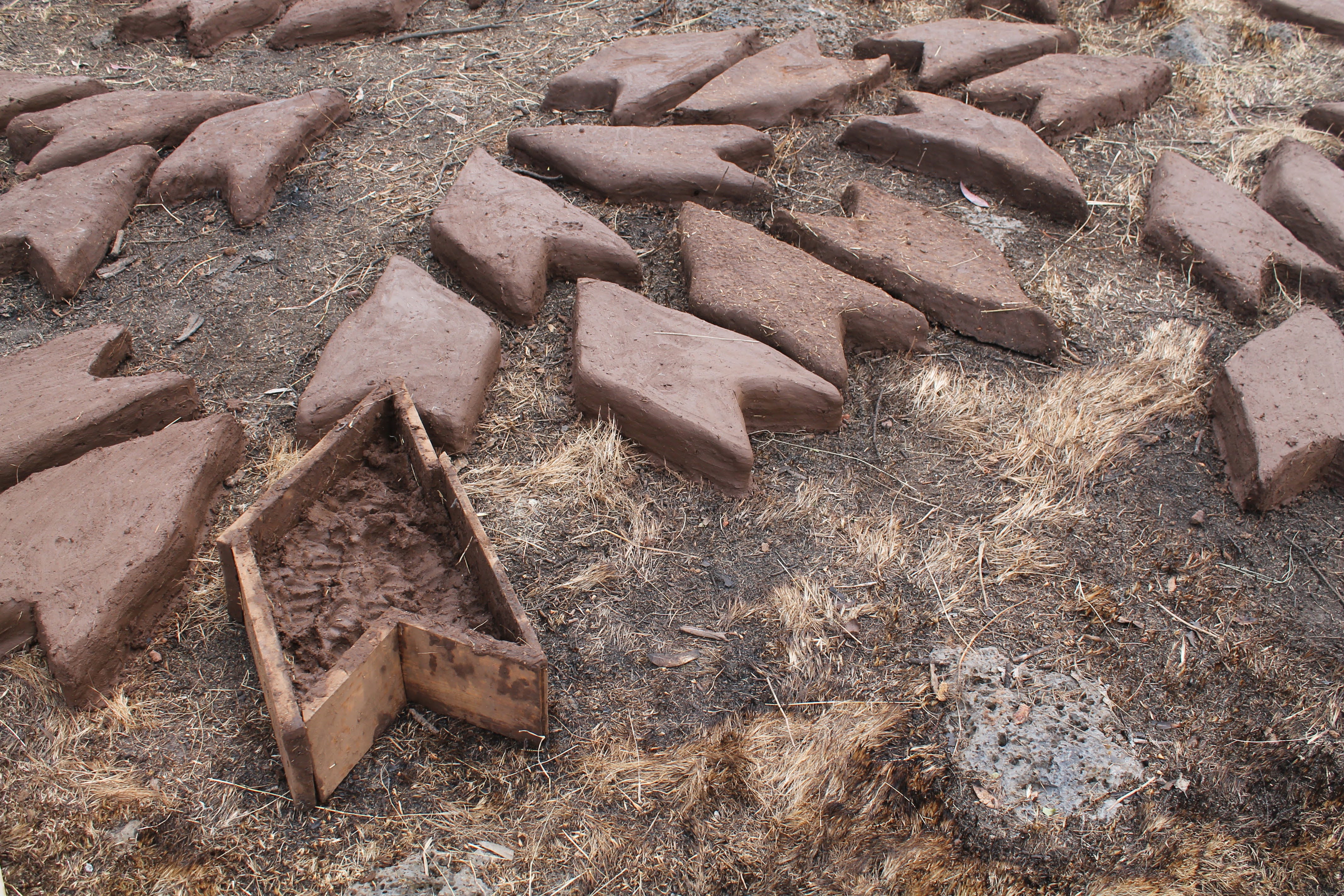
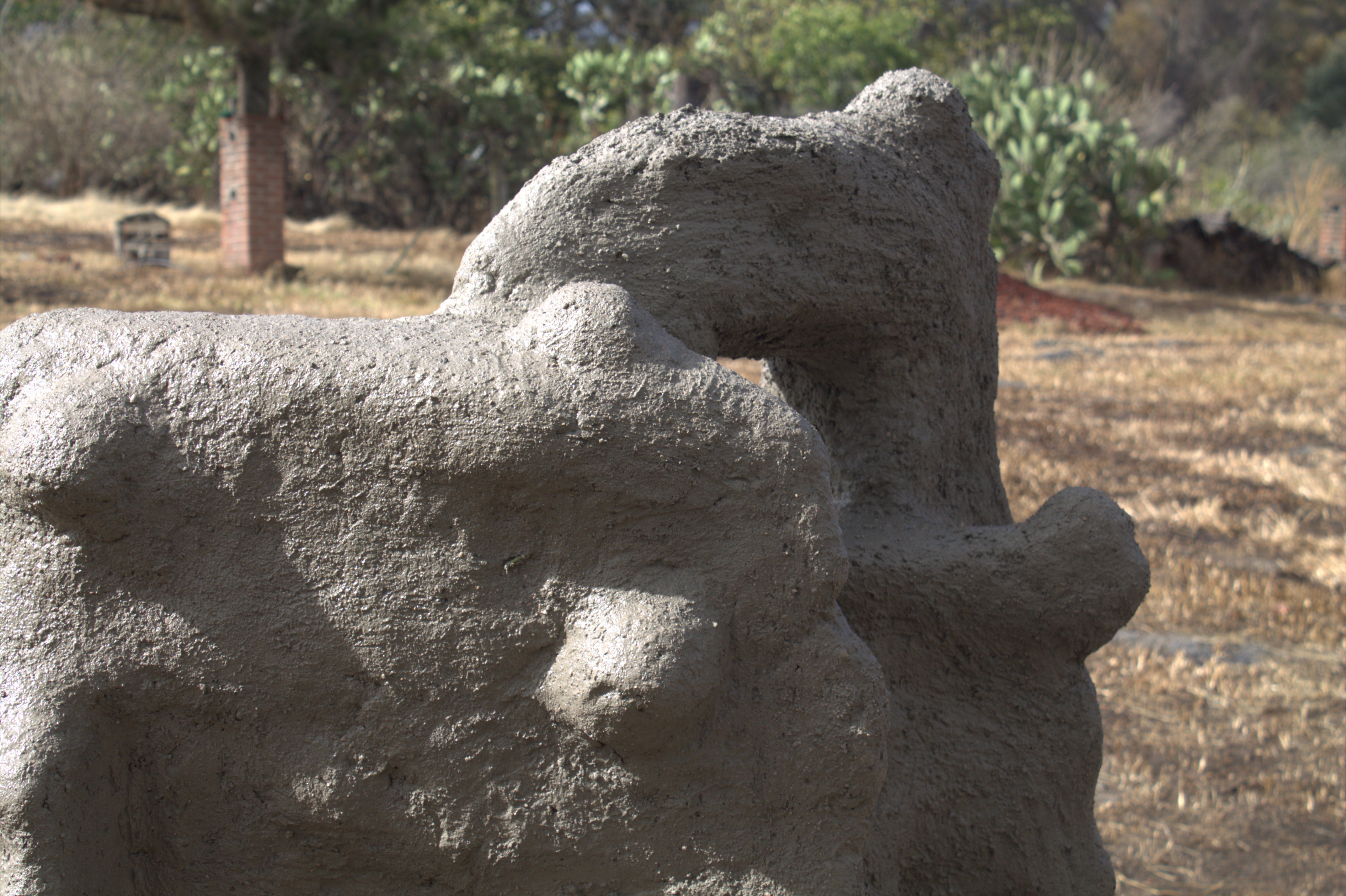

Within our work it is important to be specific about our understanding of “invasive species”. We leave the parentheses on “invasive species” as we continue to find complexities within the language used to categorize these plants.
